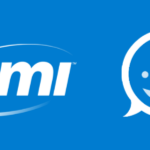
post
December 10, 2014
7 Reasons Your Contact Center Needs Cloud-Based SaaS
People often get criticized for having their head in the clouds, but for your contact center, there’s no better place to be. Over 65% of businesses are already using cloud-based applications, and 46% of contact centers planned to move their contact center to the cloud by mid-2015.
One of the best reasons to do so is cloud-based SaaS. This technology is a pretty big deal because now it’s easier than ever for companies to get business done in a timely and cost-effective manner. Under the cloud SaaS model, contact centers can essentially “rent” the software they need to use on a subscription basis. The “cloud” part is exactly what it sounds like–instead of downloading software directly on a computer, contact centers can access the software they need anywhere, anytime.
This is important because in the past, contact centers had previously been limited to using the software on their computer. They were also limited by cost—smaller contact centers couldn’t afford the large upfront fee for the hardware and software they would need to carry out their jobs.
But now they can.
Below are 7 great reasons to start using cloud-based SaaS:
- Centralized management. With SaaS, contact centers from Tulsa to Tokyo can get what they access the data they need in one centralized location (the cloud). Site-specific and company-wide customer information is available to everyone, meaning contact centers can provide a more personalized experience wherever the customer calls into. Sites that don’t have this end up lacking valuable customer context. Using SaaS, higher ups can also rapidly deploy changes within the organization over the cloud, saving the time and money it would take to do it at each site. In addition to decreasing the cost of hardware at each location, SaaS ensures brand consistency and can even be customized for client use.
- Automatic upgrades. Since the software is managed by the SaaS provider, contact centers don’t need to hire an IT professional to make software updates. When the SaaS provider makes a change to the software, the upgrade is rolled out automatically, meaning contact centers can spend more time on customers and less on manual changes. And since SaaS providers have servers to accommodate the traffic of even the biggest companies, changes can take place almost immediately.
- Rapid deployment. Traditional software takes a while to install on every single company computer, but companies can have cloud-based applications up and running in little to no time at all. For companies in a hurry, most applications offer a full-feature trial account that they can access as fast as they can enter their credit card information.
- Scalability. SaaS offers companies of all sizes solutions that fit their needs. Since a small contact center won’t have the same traffic volume as a large one, and a cloud-based application lets them pay based on the amount of traffic they receive. If and when your business grows, a cloud-based application will be able to accommodate it.
- Cost. SaaS solutions are pay as you go, meaning smaller contact centers aren’t saddled with an upfront fee they can’t afford. But even big companies can benefit from the SaaS subscription, saving money that would normally be spent on hardware or a hefty licensing fee and putting it towards the customer experience. Everybody wins!
- Mobility. Traditional software was limited by whatever computer you installed it on. However, SaaS lets you access your applications on the go, helping contact centers stay in touch with customers at all times. Today, providing a mobile solution has become especially important, given the fact that over 58% of Americans have smartphones with access to applications. If you’re out of the office, you don’t need to lug a laptop with you—everything you need is just a simple click away.
- API integration. One of the great features of cloud-based applications is that they can integrate with other cloud-based applications. For example, if you have all your customer data stored in Salesforce, you can use an API (application programming interface) to connect all that data to another cloud-based application like OneReach. This eliminates the time consuming process of manual data entry and takes advantage of other software you’re currently using. If you can dream up a connection between two programs, an API can do it.
SaaS use is only going to grow. Juniper Research predicts that SaaS revenue will reach $53.8 billion in 2018, up from $23.2 billion in 2013. Make sure your business doesn’t miss out.
To learn more about cloud-based communication services, visit onereach.com.
Photo from TrffcMedia.
Stay up to date
Latest Articles




